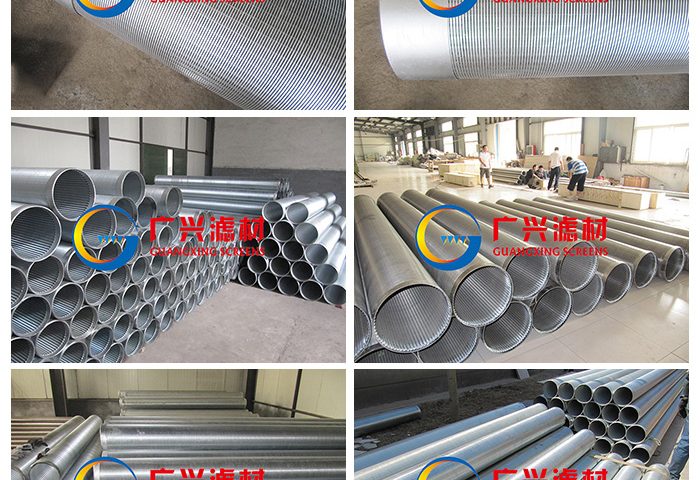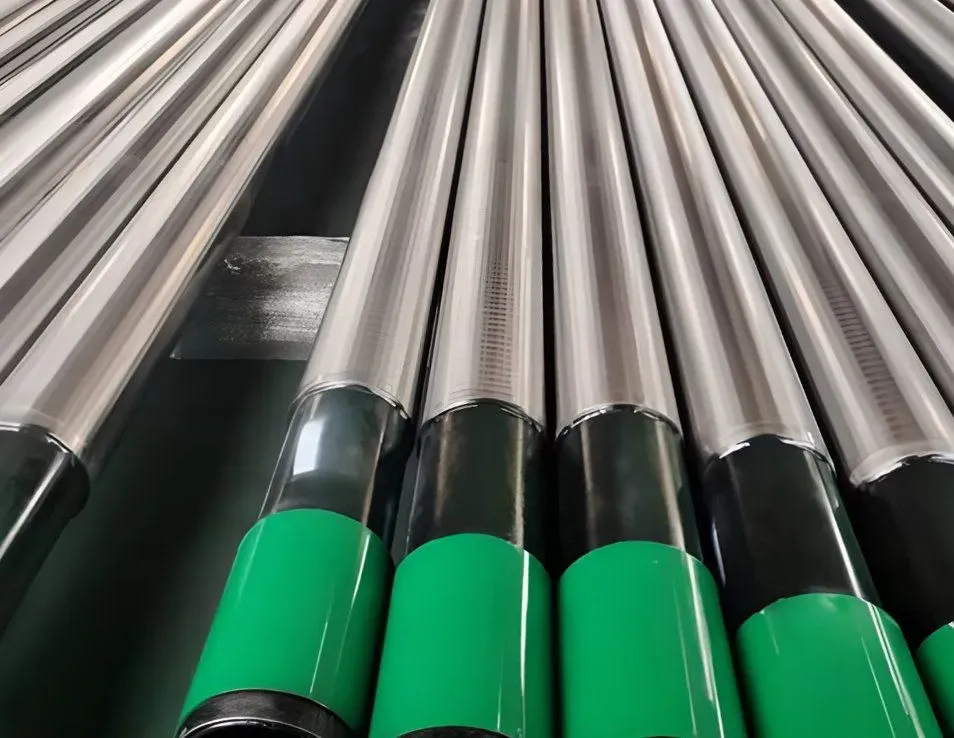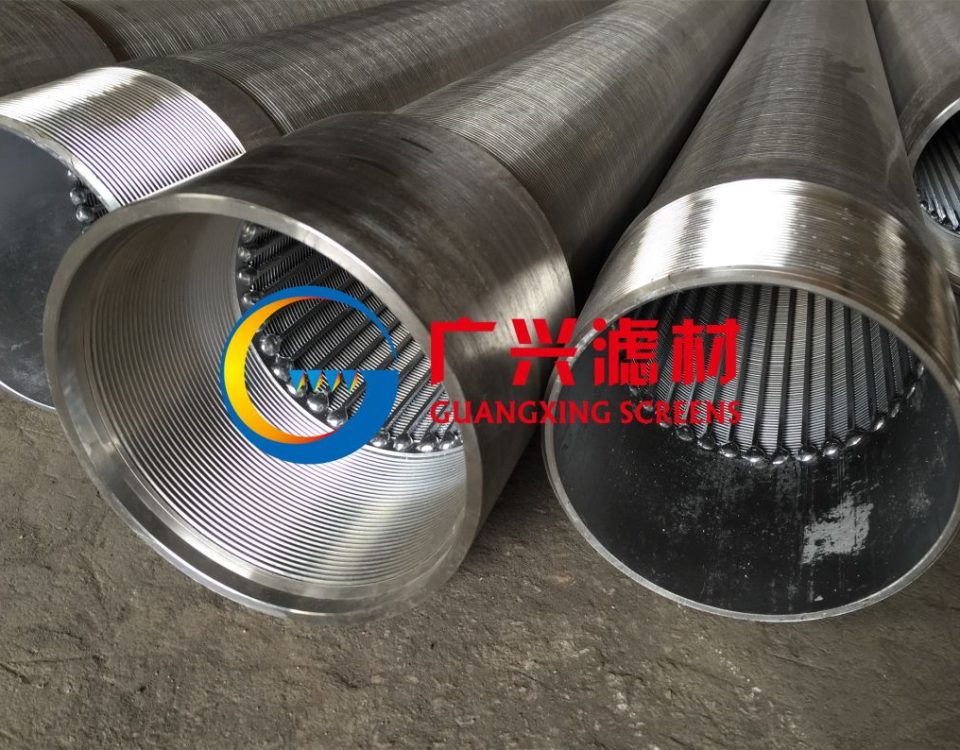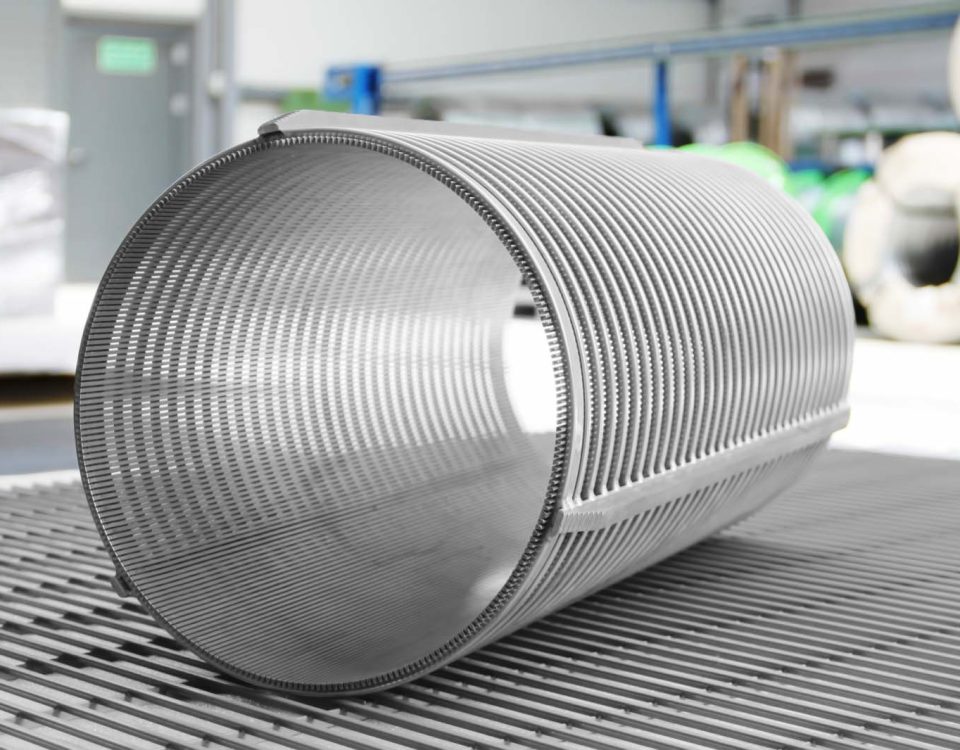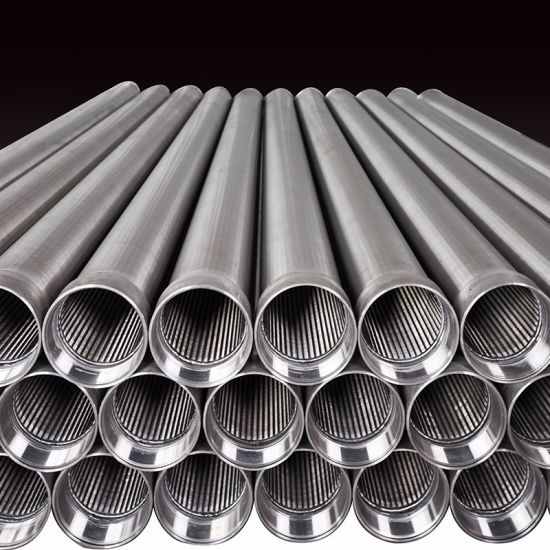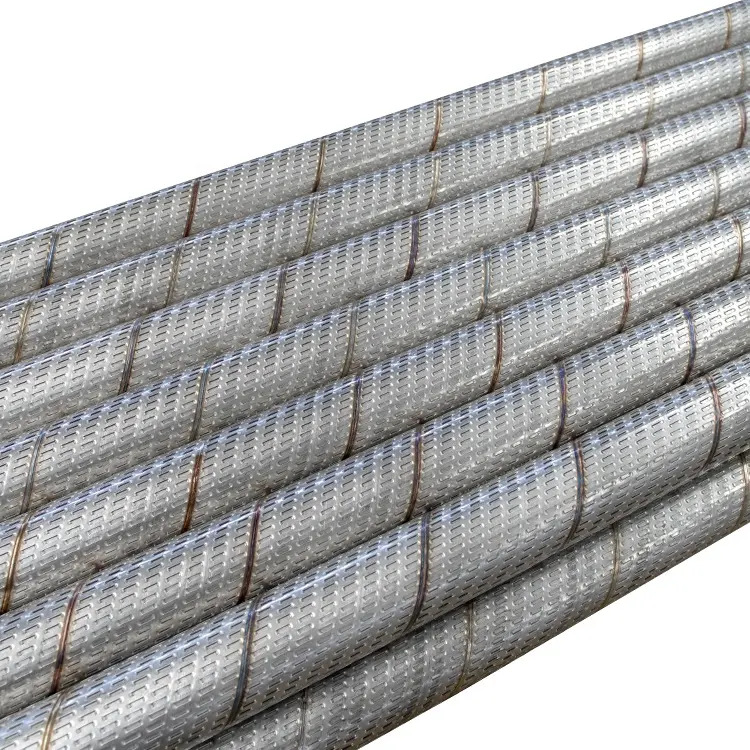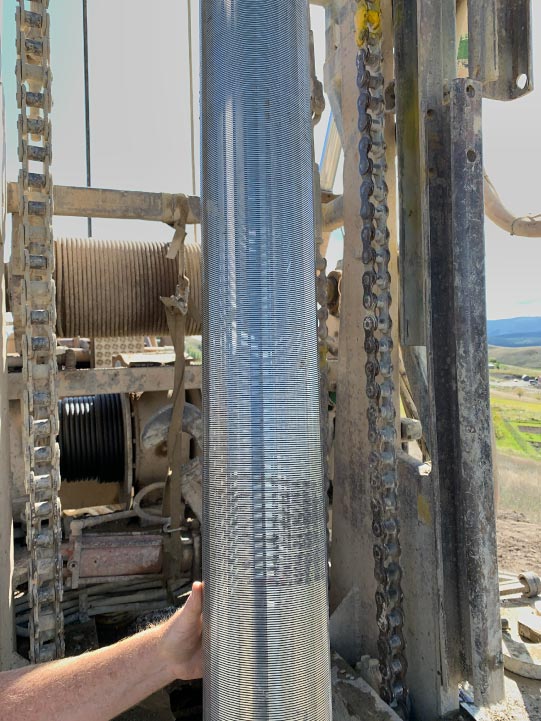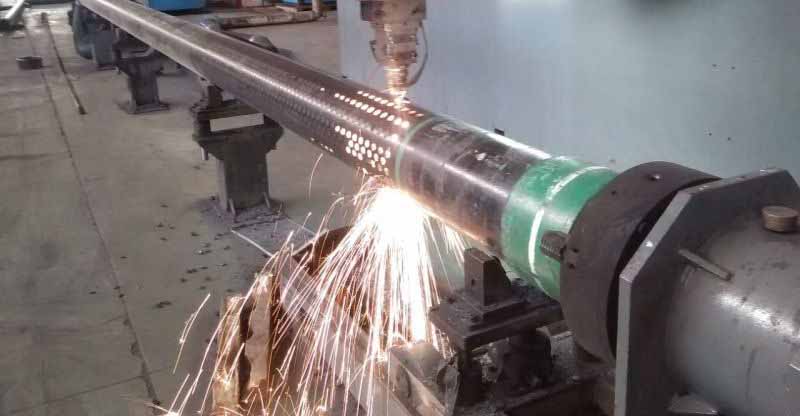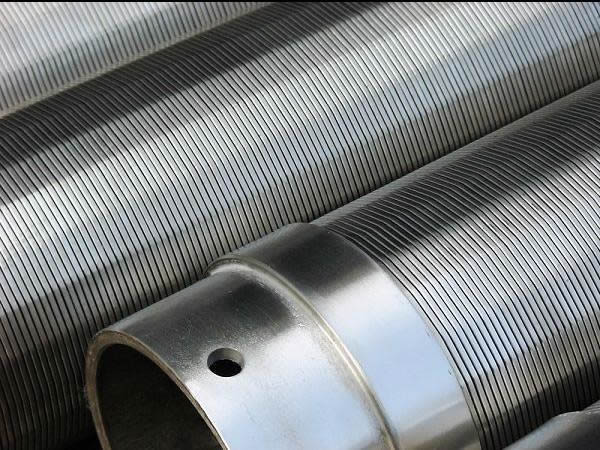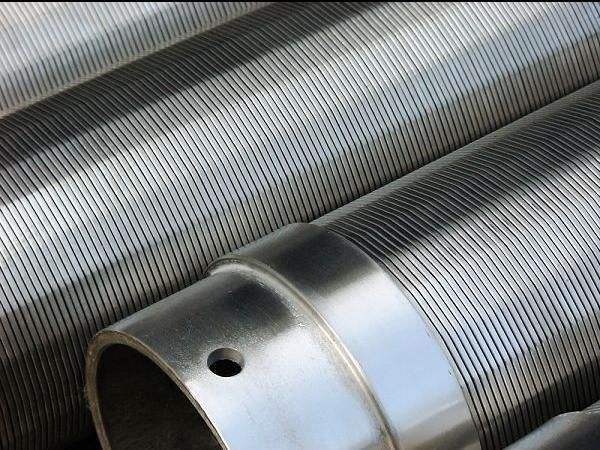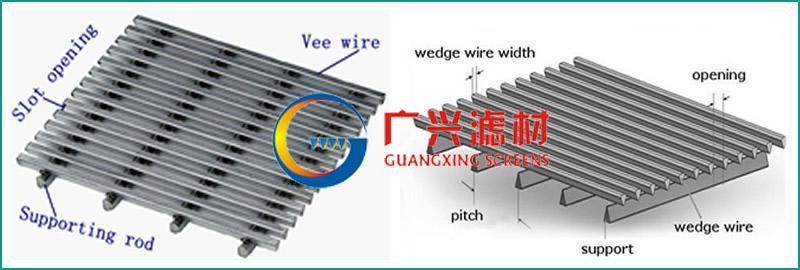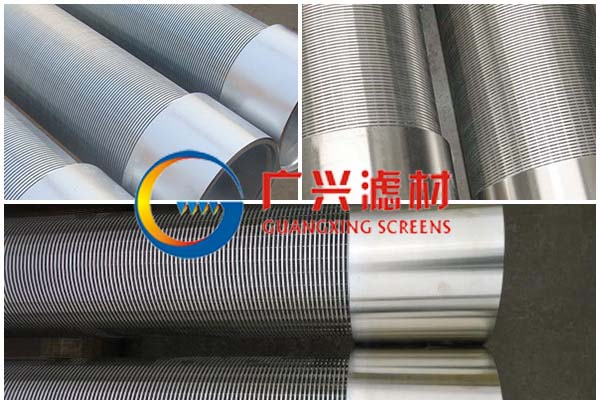Introdução
Uma tela bem é um dispositivo de filtragem que serve como a porção de ingestão de poços construídos em aquíferos não consolidados ou semi consolidados. A tela permite que água entre no poço do aquífero saturado, impede a entrada no poço de sedimento, e serve estruturalmente para suportar o material do aquífero. A importância de uma tela bem adequada não pode ser subestimada quando considerando a eficiência de um poço e o custo de registro-prazo para o seu dono.
As telas de poço são fabricadas a partir de uma variedade de materiais e variam de artifícios de mão bruta a modelos altamente eficientes e de longa vida feitos em máquinas. O valor de uma tela depende como efetivamente contribui para o sucesso de um poço. Importante incluem funções e critérios de tela:
Critérios:
- grande porcentagem de área aberta
- vagas não entupimento
- resistente à corrosão
- Funções de resistência suficiente, coluna e colapso:
- facilmente desenvolvido
- tendência incrusting mínima
- baixas perdas de carga através da tela
- controlar o bombeamento de areia em todos os tipos de aquíferos
Tela de ranhura contínua
A tela de ranhura contínua é amplamente utilizada em todo o mundo para a água, óleo, e poços de gás, e é o tipo dominante de tela usado na indústria de água bem. É feito por enrolamento fio laminado, triangular em secção transversal, em torno de uma matriz circular das barras longitudinais. O fio está ligado às barras por soldagem. Telas soldadas são comumente fabricadas em aço inoxidável.
Aberturas de encaixe são fabricadas pelas voltas sucessivas de espaçamento do fio externo para produzir o tamanho desejado slot. Aberturas de encaixe foram designadas por números que correspondem à largura das aberturas em milésimos de polegada. Um não. 10 tela de slot, por exemplo, é uma abertura de 0,10 polegada.
Contínuo-slot telas fornecem mais área de ingestão por unidade de área da superfície da tela do que qualquer outro tipo. Este tipo de tela tem a máxima área aberta. Para melhor eficiência bem, a porcentagem de área aberta em uma tela deve ser o mesmo, ou grande do que, a porosidade média do material do aquífero. Água flui mais livremente através de uma tela com uma ingestão grande área comparar a um com área aberta limitada. A velocidade de entrada é baixa, Portanto, perda para a tela é no mínimo, minimizando o abaixamento no poço.
Pontos de poço
Pontos de poço são feitos de uma variedade de tipos e tamanhos. A tela de slot contínua soldada é feita como um ponto bem por um ponto de aço forjado para a extremidade inferior de uma tela e uma haste de tubo rosqueado na extremidade superior. Este tipo de construção é o mais eficiente hidraulicamente. Os tamanhos mais comuns são 1 % polegada ou 2 polegadas. Eles são construídos com aço de baixo carbono ou aço inoxidável. Embora eles possam suportar a direção dura, Eles não devem ser torcidos enquanto são conduzidos ou usados em áreas onde são esperadas pedreiras ou pedras grandes.
Instalação da tela
Existem diferentes tipos de métodos de instalação de tela usados, Embora certos procedimentos possam ser mais práticos ou mais econômicos em certas áreas ou quando plataformas de perfuração específicas são usadas. Os procedimentos exatos a serem seguidos ao instalar uma tela de poço dependem de
A natureza dos materiais do aqüífero, o método usado para perfurar o poço, as dimensões do poço, as condições hidráulicas no aqüífero, e os materiais de revestimento e tela.
Outros tipos de telas de poço
Existem vários outros tipos de tela de poço. Alguns são fabricados e outros são perfurados à mão de invólucro ou outros materiais. Essas telas podem ser adequadas em algumas formações geológicas, mas pode fornecer apenas sucesso marginal sob muitas outras condições hidrogeológicas. Área aberta limitada, Má configuração de slot, and short-lived screen material contribute to their limited success.
Slotted Plastic Pipe
Slotted plastic pipe is also use to screen wells in some areas particularily in clay rich soils where no aquifer zone can be identified. Slotted plastic screens are not affected by corrosive water, are easy to install, and are relatively inexpensive. Slotted plastic screens have less than half the open are of continuous-slot screens. Além disso, plastic pipe materials are from 1/6 Para 1/10 as strong as stainless steel well screens.
Pull-Back Method
The pull-back method of screen installation is a safe method of installation that reduces problems resulting from heaving sediment, sloughing of the borehole walls, and setting the screen at the wrong depth. This method also permits the screen to be removed and replaced, if necessary without disturbing the sanitary grout seal outside the well casing.
The pull-back method involves installing the casing to the full depth of the well, lowering (telescoping) the well screen inside the casing, and then pulling back or lifting the casing far enough to expose the screen to the water-bearing formations. The casing must be strong enough to be set the full depth of the well and then be pulled back the length of the screen.
Some contractors use a rise pipe (blank) attached to the top of the screen so the entire screen can be exposed without slipping out of the bottom of the casing. On top of the screen, a neoprene packer is installed to provide a sand-tight seal between the top of the screen and the casing. Dois ou mais Packers são usados em série para eliminar problemas causados por pequenos desvios nas dimensões do invólucro ou empacotador resultantes de manuseio inadequado.
Instalação de string única
Às vezes, as telas são anexadas diretamente ao fundo do invólucro. Telas menores de diâmetro que o invólucro podem ser soldadas ou rosqueadas diretamente no revestimento, montando um adaptador de cone ou anel de solda queimado na parte superior da tela. Telas do mesmo tamanho que o invólucro podem ser soldadas ou rosqueadas diretamente na parte inferior do invólucro. O revestimento e a tela são então definidos no buraco. Para poços naturalmente desenvolvidos, A formação é induzida a caver. Quando os poços são embalados com o filtro, O material da matilha é colocado antes da formação ser induzida a caverna.
Tamanho do slot & Análise de peneira
A seleção do tamanho do slot é uma etapa crítica para garantir o máximo desempenho do poço. A tela é normalmente projetada para segurar 50 porcentagem da formação, e a velocidade de entrada da tela não deve exceder 1/10 ou .1 pé por segundo. A velocidade é calculada dividindo o rendimento do poço em GPM pela área aberta da tela em polegadas quadradas.
O tamanho do slot da tela é baseado em uma análise de tamanho das amostras de formação. Analisando os tamanhos dos componentes dos grãos na amostra, Uma curva de distribuição do tamanho de grãos pode ser desenhada. Vários métodos podem ser usados para obter informações sobre a distribuição de tamanho de grão. O método mais utilizado envolve passar os materiais através de um conjunto empilhado de peneiras de bronze ou aço inoxidável.
During the sieving process, each sieve filters out a certain percentage of the entire sample; the finest material collects in the bottom pan. Sieve analysis not only provides the basis for determining the slot size, but also other factors affecting screened well design. Sieve analysis is also used for filter pack design.
Filter Packed Wells
Many wells are designed for a filter pack, thereby altering the screen installation process. Filter-packed wells different from naturally developed wells in that a silica sand is placed around the well screen to a predetermined thickness. The geologic conditions, drilling method, and type of screen determine whether a filter pack should be used.
The filter pack provides both filtration and stabilization of the screen. The main objective of filter-packing is to install material more permeable than the native formation into the area immediately around well screen. The advantages of filter-packing a well are: greater porosity, higher hydraulic conductivity, higher yield, reduced entrance velocity, reduced sand pumping, and easier grouting. Filter pack must be chlorinated prior to placing it into the open annulus to insure that contaminants are not introduced into the well during the filter-packing process.

